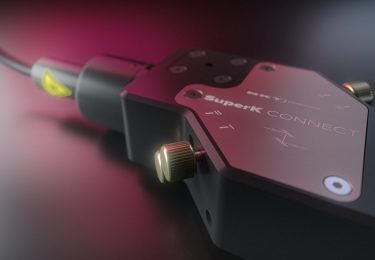SuperK VARIA tunable filter
The SuperK VARIA filter is a cost-effective and flexible alternative to a monochromator. It transforms the SuperK supercontinuum lasers into powerful single-line lasers with a 440 nm wide tuning range and variable bandwidth. The SuperK VARIA is the most flexible filter solution on the market. Tune the center wavelength of the passband to anything between 400 and 840 nm. The bandwidth is variable between 10 and 100 nm to ensure a variable power level and speckle reduction.

Key Features
400-840 nm coverage
Variable bandwidth
50 dB out-of-band suppression
High transmission, no polarization loss
Handles high average power
The SuperK VARIA is a cost-effective and flexible alternative to a monochromator
With the increased filter bandwidth comes a higher power throughput and reduced speckle in imaging applications.
An out-of-band suppression of up to 50 dB makes the SuperK VARIA the ideal tool for FLIM and other applications that use high-sensitivity detectors.
Use the collimated free-space output from the filter directly or combine the VARIA with the SuperK CONNECT broadband fiber delivery system to get pristine single-mode fiber delivery over the entire tuning range – in one single fiber.


Single-mode fiber delivery
The SuperK VARIA is compatible with our SuperK CONNECT high-performance fiber delivery system that comes complete with broadband fibers and a range of termination options such as FC/PC connectors or high-quality collimators.
Interfacing is handled by the CONNECT fiber coupling block that ensures easy and stable single-mode coupling that can be disconnected and reconnected without alignment.

Specifications
wavelength position4)
1) Average in 50 nm bandwidth.
2) 10 nm above lower FWHM transmission wavelength in the 400-900 nm range. With SuperK CONNECT single-mode fiber delivery, e.g. FD2.
3) 10 nm below lower FWHM transmission wavelength in the 400-900 nm range. With SuperK CONNECT single-mode fiber delivery, e.g. FD2.
4) With collimator inserted. The wavelength position may shift if the collimator is removed and reinserted.












